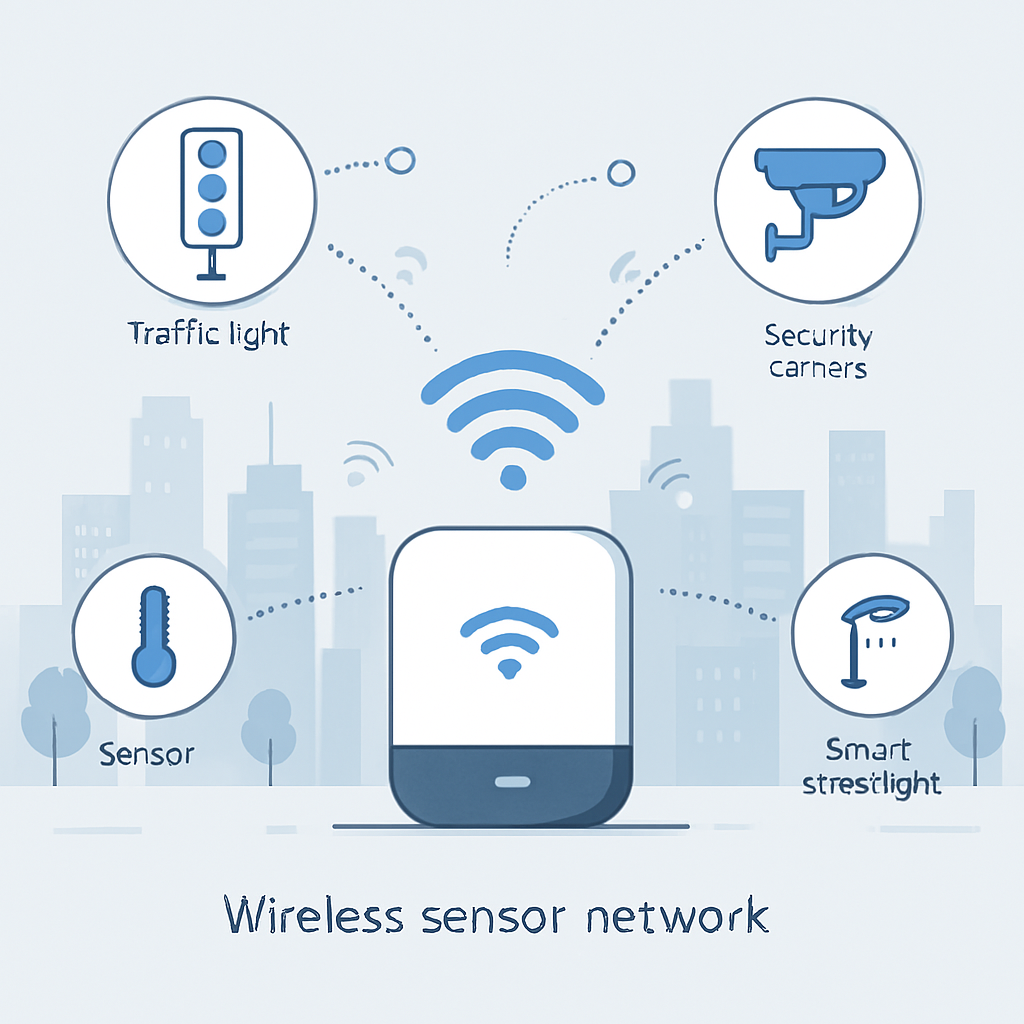Wireless Sensor Network: A Complete Guide
Introduction
A wireless sensor network (WSN) is one of the most transformative technologies in the digital era, enabling real-time monitoring, data collection, and communication across various environments. From healthcare and industrial automation to smart homes and cities, WSNs play a crucial role in how devices interact without human intervention. This article explores what a wireless sensor network is, how it works, its architecture, applications, benefits, and challenges.
What is a Wireless Sensor Network?
A wireless sensor network is a system that consists of spatially distributed sensors connected wirelessly to monitor physical or environmental conditions such as temperature, humidity, vibration, or motion. These sensors collect data and transmit it to a central hub or gateway where it is processed and analyzed. Unlike traditional wired systems, WSNs operate without extensive infrastructure, making them flexible and cost-effective.
Core Components of a Wireless Sensor Network
A wireless sensor network relies on several key elements:
- Sensor Nodes: Small devices equipped with sensors, processors, and communication modules.
- Gateway or Sink Node: Acts as the bridge between the WSN and the external network or cloud system.
- Base Station: Collects and processes sensor data for decision-making.
- Power Source: Usually batteries or energy-harvesting mechanisms to ensure long-term operation.
- Communication Protocols: Standards like Zigbee, Bluetooth, LoRa, and Wi-Fi enable seamless connectivity.
How a Wireless Sensor Network Works
The process of a wireless sensor network involves four main stages:
- Sensing: Nodes detect environmental changes or specific parameters.
- Processing: Data is compressed and prepared for transmission.
- Transmission: Wireless communication protocols send data to gateways.
- Analysis: Central systems analyze information to support automation, alerts, or reporting.
This workflow allows industries to gain real-time insights without physical wiring, making WSNs efficient and adaptable.
Applications of Wireless Sensor Networks
1. Healthcare and Medical Monitoring
WSNs are widely used in wearable devices for patient monitoring, tracking heart rate, blood pressure, or oxygen levels in real time.
2. Industrial Automation
Factories rely on wireless sensor networks to monitor machinery, detect faults, and ensure predictive maintenance.
3. Environmental Monitoring
From weather stations to pollution control, WSNs gather accurate data for environmental studies and disaster management.
4. Smart Cities
Urban infrastructure integrates WSNs for traffic management, waste control, energy efficiency, and public safety.
5. Agriculture
Farmers use wireless sensor networks for precision farming, monitoring soil moisture, crop health, and irrigation systems.
Benefits of a Wireless Sensor Network
- Cost-Efficiency: Eliminates the need for complex wiring infrastructure.
- Scalability: Easy to expand by adding more nodes.
- Flexibility: Works in hard-to-reach or remote locations.
- Energy Efficiency: Low-power protocols extend battery life.
- Real-Time Data: Provides instant monitoring and alerts.
Challenges of Wireless Sensor Networks
While the advantages are significant, WSNs also face several limitations:
- Power Limitations: Sensor nodes often rely on batteries with limited life.
- Security Risks: Data transmitted wirelessly is vulnerable to hacking or interception.
- Scalability Issues: Large-scale deployments may encounter interference and connectivity problems.
- Environmental Constraints: Harsh environments can affect sensor performance and longevity.
Future of Wireless Sensor Networks
The future of wireless sensor networks is closely tied to the growth of the Internet of Things (IoT). With advancements in 5G connectivity, artificial intelligence, and edge computing, WSNs will become even more powerful and efficient. Industries will leverage WSNs to support automation, smart cities, sustainable agriculture, and healthcare innovation.
Conclusion
A wireless sensor network is an essential technology for modern industries, enabling real-time monitoring, automation, and smart decision-making. From healthcare to agriculture, WSNs provide cost-effective, flexible, and scalable solutions. Despite challenges such as power constraints and security risks, the future of WSNs looks promising as they evolve alongside IoT and AI. For organizations aiming to stay ahead in the digital era, investing in wireless sensor networks is a step toward smarter, more connected operations.




Comments are closed